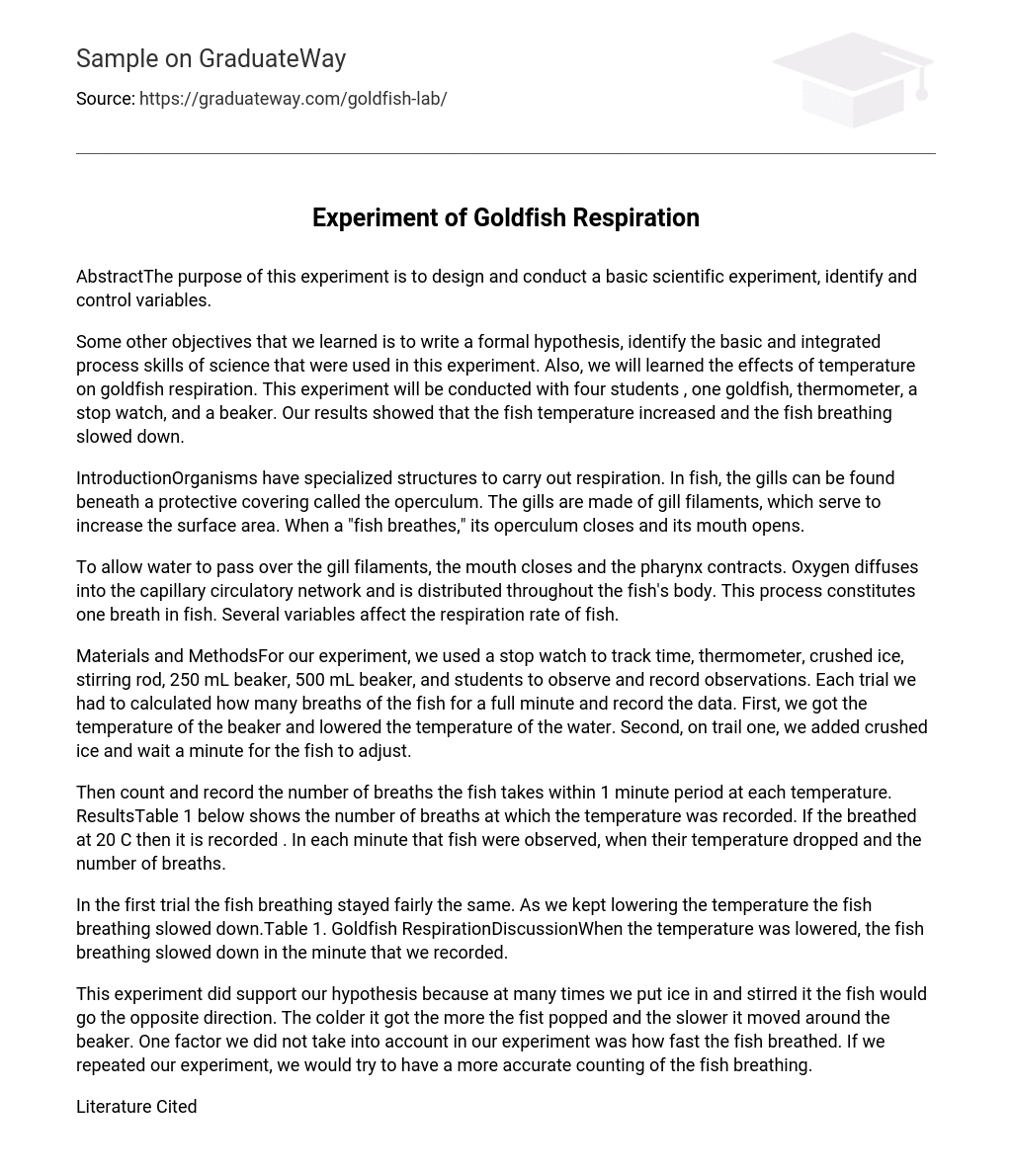AbstractThe purpose of this experiment is to design and conduct a basic scientific experiment, identify and control variables.
Some other objectives that we learned is to write a formal hypothesis, identify the basic and integrated process skills of science that were used in this experiment. Also, we will learned the effects of temperature on goldfish respiration. This experiment will be conducted with four students , one goldfish, thermometer, a stop watch, and a beaker. Our results showed that the fish temperature increased and the fish breathing slowed down.
IntroductionOrganisms have specialized structures to carry out respiration. In fish, the gills can be found beneath a protective covering called the operculum. The gills are made of gill filaments, which serve to increase the surface area. When a “fish breathes,” its operculum closes and its mouth opens.
To allow water to pass over the gill filaments, the mouth closes and the pharynx contracts. Oxygen diffuses into the capillary circulatory network and is distributed throughout the fish’s body. This process constitutes one breath in fish. Several variables affect the respiration rate of fish.
Materials and MethodsFor our experiment, we used a stop watch to track time, thermometer, crushed ice, stirring rod, 250 mL beaker, 500 mL beaker, and students to observe and record observations. Each trial we had to calculated how many breaths of the fish for a full minute and record the data. First, we got the temperature of the beaker and lowered the temperature of the water. Second, on trail one, we added crushed ice and wait a minute for the fish to adjust.
Then count and record the number of breaths the fish takes within 1 minute period at each temperature. ResultsTable 1 below shows the number of breaths at which the temperature was recorded. If the breathed at 20 C then it is recorded . In each minute that fish were observed, when their temperature dropped and the number of breaths.
In the first trial the fish breathing stayed fairly the same. As we kept lowering the temperature the fish breathing slowed down.Table 1. Goldfish RespirationDiscussionWhen the temperature was lowered, the fish breathing slowed down in the minute that we recorded.
This experiment did support our hypothesis because at many times we put ice in and stirred it the fish would go the opposite direction. The colder it got the more the fist popped and the slower it moved around the beaker. One factor we did not take into account in our experiment was how fast the fish breathed. If we repeated our experiment, we would try to have a more accurate counting of the fish breathing.
Literature Cited





